Hard to Believe: 4000!
This blog post is the 4000th published since I began on 3 March 2009. At that time, I decided to phase out the BAA Bulletins and do all of my teaching on the blog. The comments on the introductory first “post,” are quite interesting. You can read them here.
Stuff
As you peruse today’s ten featured images, note the incredible versatility of the Sony 70-200 II with the 2X II TC and the a1.
Your Call
Not all of today’s images could be described as great. The purpose of the post is to open your eyes to the various possibilities when you are faced with wind-against-sun conditions. After enlarging and viewing today’s ten images, all are invited to leave a comment with noting what they think is the strongest image, which they think is the weakest image, and the reason they made each choice.
My Call
Thanks to the several folks left thoughtful comments at Wednesday blog post.
Here are my thoughts:
Image #1 was a small crop from our left and from below. Do you like the wider view in Image #2 or the tighter crop in Image #1? Why?
I wound up liking the wider view, Image #2 as it did give a better sense of an excited chick running at full speed.
Which image was created first? How do you know?
I knew that Image #2 was created before Image #1 because of the position of the shadow.
Which pose do you like best? Why?
For me, it is a tie. I do prefer the action in Image #2, but I do not like that the tip of the bill (in #2) merges with the leading edge of the far wing.
Overall, which image do you like best? Why?
All things considered, I’ll go with Image #2 for the sense of speed it provides.
Was I lucky? Why or why not? Are there any “buts”?
I was very lucky to be in just the right spot when the chick began to run. But, my knowledge of bird behavior allowed me to have all the right settings while anticipating the best possible course of events.
DeSoto #2
To learn about the late registration discount for the 2nd DeSoto IPT (Tuesday 11 April through the morning session on 14 April 2023. 3 1/2 Days: $1899.00 includes three working brunches. Limit six photographers/Openings: 5), call me at 863-221-2372. If I do not pick up, please shoot me a text.
What’s Up?
I created one really good image of an Osprey in flight with a fresh-caught Black Crappie down by the lake on Tuesday morning. It was returning to the new natural nest in a dead tree at the north end of the lakefront.
Yesterday was Friday 7 April 2023. When originally published, I ad just got back from my morning photo session. I had gotten a late start due to the fog; the sun broke through at about 7:45am. I had driven around for a while without accomplishing much other than a few snaps of the large colt at the north end. I was about to head home early to finish this post, but then, I spotted one of the young Crested Caracaras. Working from the front seat of my SUV at 840mm working off the BLUBB, I made my best field guide portraits of the bird that had been in the nest less than a week ago. When the bird flew off, it landed atop a big bush in the marsh. I followed and saw that it was being harassed by Boat-tailed Grackles. I set up the 600 on the tripod and just before the caracara flew off.
This blog post took at least three hours to prepare including the time spent on the image optimizations. Wherever you are and whatever you are doing, I hope that you too have a great day.
Please remember to use the B&H and Amazon links that are found on most blog pages and to use the BIRDSASART discount code at checkout when purchasing your new gear from Bedfords to get 3% back on your credit card and enjoy free second-day air FedEx. Please, also, consider joining a BAA IPT. You will be amazed at how much you will learn!
You can find some great photo accessories (and necessities, like surf booties!) on Amazon by clicking on the Stuff tab on the orange/yellow menu bar above. On a related note, it would be extremely helpful if blog-folks who, like me, spend too much money on Amazon, would get in the habit of clicking on the Amazon logo link on the right side of each blog post when they shop online. As you might expect, doing so will not cost you a single penny, but would be appreciated tremendously by yours truly. And doing so, works seamlessly with your Amazon Prime account.
Please remember that if an item — a Delkin flash card, or a tripod head — for example, that is available from B&H and/or Bedfords, is also available in the BAA Online Store, it would be great, and greatly appreciated, if you would opt to purchase from us. We will match any price. Please remember also to use my B&H affiliate links or to earn 3% cash back at Bedfords by using the BIRDSASART discount code at checkout for your major gear purchases. Doing either often earns you free guides and/or discounts. And always earns my great appreciation.
|
|
|
This image was created on 2 April at Fort DeSoto Park. While standing at full height, I used the handheld Sony FE 70-200mm f/2.8 GM OSS II lens with the Sony FE 2x teleconverter (at 226mm), and The One, the Sony Alpha 1 Mirrorless Digital Camera.. The exposure was determined via Zebras. ISO 1000: 1/2500 sec. at f/5.6 (wide open) in Manual mode. AWB at 8:31:23am on a variably sunny morning. Tracking: Expand Spot AF/C with Bird-Eye/Face Detection performed perfectly. Click on the image to enjoy a high-res version. Image #1: Brown Pelican ready to dive |
Wind Against Sun — “What to Do?” I
If you are faced with a sunny morning with the sun behind you and the wind blowing in your face, be on the lookout for subjects that are flying the “wrong” way, those that for one reason or another, are not flying (or facing) into the wind. The adult pelican in Image #1 flew the “wrong” way as it was after the school of baitfish that was right up against the pier.
|
|
|
This image was created on 2 April at Fort DeSoto Park. While standing at full height, I used the handheld Sony FE 70-200mm f/2.8 GM OSS II lens with the Sony FE 2x teleconverter (at 400mm), and The One, the Sony Alpha 1 Mirrorless Digital Camera.. The exposure was determined via Zebras. ISO 500: 1/3200 sec. at f/5.6 (wide open) in Manual mode. AWB at 8:42:00am on a variably sunny morning. Tracking: Zone AF/C with Bird-Eye/Face Detection performed perfectly. Click on the image to enjoy a high-res version. Image #2: Royal Tern wheeling in flight |
Wind Against Sun — “What to Do?” II
When faced with wind-against-sun conditions, study the flight patterns of fishing birds. Some of the terns and gulls were flying away from me into the wind, but would rock up and turn left after a missed strike. That had them flying at me to some degree.
|
|
|
This image was created on 2 April at Fort DeSoto Park. While standing at full height, I used the handheld Sony FE 70-200mm f/2.8 GM OSS II lens with the Sony FE 2x teleconverter (at 400mm), and The One, the Sony Alpha 1 Mirrorless Digital Camera.. The exposure was determined via Zebras. ISO 800: 1/4000 sec. at f/5.6 (wide open) in Manual mode. AWB at 8:45:34am on a variably sunny morning. Tracking: Zone AF/C with Bird-Eye/Face Detection performed perfectly. Click on the image to enjoy a high-res version. Image #3: Royal Tern dorsal view flight shot |
Wind Against Sun — “What to Do?” III
In the same situation as in #2, there were some birds that were diving from right to left toward the proper sun angle. Bingo!
|
|
|
This image was created on 2 April at Fort DeSoto Park. While standing at full height, I used the handheld Sony FE 70-200mm f/2.8 GM OSS II lens with the Sony FE 2x teleconverter (at 400mm), and The One, the Sony Alpha 1 Mirrorless Digital Camera.. The exposure was determined via Zebras. ISO 500: 1/4000 sec. at f/5.6 (wide open) in Manual mode. AWB at 8:55:46am on a variably cloudy morning. Tracking: Zone AF/C with Bird-Eye/Face Detection performed perfectly. Click on the image to enjoy a high-res version. Image #4: Brown Pelican with sky silhouette |
Wind Against Sun — “What to Do?” IV
When dealing with wind-against-sun conditions, another strategy that can pay off nicely is to turn around and look at the backlit subjects between you and the sun. Do understand that with a few clouds in the eastern sky, the sky in the properly exposed raw file for this image was white. The sky color is introduced during the raw conversion in Photoshop.
|
|
|
This image was created on 2 April at Fort DeSoto Park. While standing at full height, I used the handheld Sony FE 70-200mm f/2.8 GM OSS II lens with the Sony FE 2x teleconverter (at 400mm), and The One, the Sony Alpha 1 Mirrorless Digital Camera.. The exposure was determined via Zebras. ISO 1600: 1/4000 sec. at f/5.6 (wide open) in Manual mode. AWB at 8:56:41am on a variably cloudy morning. Tracking: Zone AF/C with Bird-Eye/Face Detection performed perfectly. Click on the image to enjoy a high-res version. Image #5: Brown Pelican backlit B&W emerging after dive |
Wind Against Sun — “What to Do?” V
Note that this backlit image was created less than one minute after the previous image. Using the same shutter speed and aperture, only the ISO changed. Chalk another one up to Sony Zebra technology for stills. By studying the EXIF data for all ten of today’s featured images, you can see just how valuable Zebras can be when the light is changing almost constantly.
I could have gone either way with the image optimization, but opted to go for the “Victory at Sea” look.
|
|
|
This image was created on 2 April at Fort DeSoto Park. While standing at full height, I used the handheld Sony FE 70-200mm f/2.8 GM OSS II lens with the Sony FE 2x teleconverter (at 400mm), and The One, the Sony Alpha 1 Mirrorless Digital Camera.. The exposure was determined via Zebras. ISO 1600: 1/4000 sec. at f/5.6 (wide open) in Manual mode. AWB at 8:57:21am on a variably cloudy morning. Tracking: Zone AF/C with Bird-Eye/Face Detection performed perfectly. Click on the image to enjoy a high-res version. Image #6: Brown Pelican backlit emerging after dive with bill pouch distended |
Wind Against Sun — “What to Do?” VI
As the bird in this image was not lined up with the sun as was the bird in #5, I opted to process it to show the true colors of the pelican, in part because I like the light coming through the distended bill pouch.
|
|
|
This image was created on 2 April at Fort DeSoto Park. While standing at full height, I used the handheld Sony FE 70-200mm f/2.8 GM OSS II lens with the Sony FE 2x teleconverter (at 400mm), and The One, the Sony Alpha 1 Mirrorless Digital Camera.. The exposure was determined via Zebras. ISO 800: 1/4000 sec. at f/5.6 (wide open) in Manual mode. AWB at 9:10:40am on a variably cloudy morning. Tracking: Expand Spot AF/C with Bird-Eye/Face Detection performed perfectly. Click on the image to enjoy a high-res version. Image #7: Royal Tern flying away |
Wind Against Sun — “What to Do?” VII
On wind-against-sun days, it never hurts to pray for clouds as they open up a variety of possibilities. Those include dorsal views of birds flying away from you like the Royal Tern in #7, and several of the previous images. Yes, this image would have been stronger if the bird had looked back at me just a bit more.
|
|
|
This image was created on 2 April at Fort DeSoto Park. Crouching a bit, I used the handheld Sony FE 70-200mm f/2.8 GM OSS II lens with the Sony FE 2x teleconverter (at 400mm), and The One, the Sony Alpha 1 Mirrorless Digital Camera.. The exposure was determined via Zebras. ISO 800: 1/4000 sec. at f/5.6 (wide open) in Manual mode. AWB at 9:10:40am on a variably cloudy morning. Tracking: Expand Spot AF/C with Bird-Eye/Face Detection performed perfectly. Click on the image to enjoy a high-res version. Image #8: Great Egret white sky silhouette |
Wind Against Sun — “What to Do?” VIII
When things are looking dire, turning around and facing the sun can work quite well. This Great Egret provided fodder for a pleasing silhouette. Again, the properly exposed raw file featured a white sky. To provide the potential of color, you will want to place the subject as close to the filtered sunlight as possible without including the sun in the frame.
|
|
|
This image was created on 2 April at Fort DeSoto Park. While standing at full height, I used the handheld Sony FE 70-200mm f/2.8 GM OSS II lens with the Sony FE 2x teleconverter (at 400mm), and The One, the Sony Alpha 1 Mirrorless Digital Camera.. The exposure was determined via Zebras. ISO 1600: 1/4000 sec. at f/5.6 (wide open) in Manual mode. AWB at 9:17:10am on a variably cloudy morning. Tracking: Expand Spot AF/C with Bird-Eye/Face Detection performed perfectly. Click on the image to enjoy a high-res version. Image #9: Laughing Gull dorsal flight |
Wind Against Sun — “What to Do?” IX
This one is similar to #7. A but more of a head turn would have revealed the gull’s red bill. But, I do love the patterns and shapes revealed by the dorsal view, especially with the tail.
|
|
|
This image was created on 2 April at Fort DeSoto Park. While standing at full height, I used the handheld Sony FE 70-200mm f/2.8 GM OSS II lens with the Sony FE 2x teleconverter (at 400mm), and The One, the Sony Alpha 1 Mirrorless Digital Camera.. The exposure was determined via Zebras. ISO 1600: 1/3200 sec. at f/5.6 (wide open) in Manual mode. AWB at 9:27:09am on a variably cloudy morning. Tracking: Zone AF/C with Bird-Eye/Face Detection performed perfectly. Click on the image to enjoy a high-res version. Image #10: Laughing Gulls chasing Sandwich Tern with baitfish |
Wind Against Sun — “What to Do?” X
With a ton of bait in the water, midair fights occurred fairly frequently. Right before I made this image, there was a point blank fracas not twenty feet in front of me. I did not even have time to zoom out and raise my lens. The full cloud cover was prefect for #10. Here’s a tip for photographing these midair battles: frame the image, acquire focus, and keep the shutter button depressed until the action if over. Do not worry about image design — you can sort things out after the fact on your computer.
|
|
|
Fort DeSoto in spring is rife with tame birds, many in full breeding plumage. Click on the composite to enjoy a larger version. Clockwise from upper left around to center: Laughing Gull landing on head of Brown Pelican, Laughing Gull in flight, Reddish Egret sunrise silhouette, Great Blue Heron with needlefish, Yellow-crowned Night Heron with ghost crab, Roseate Spoonbill, Sanderling in breeding plumage, and white morph Reddish Egret in glorious breeding plumage. |
The 2023 Spring Fort DeSoto Instructional Photo Tours (IPTs)
Spring Fort DeSoto IPT #2: Tuesday 11 April through the morning session on 14 April 2023. 3 1/2 Days: $1899.00 includes three working brunches. Limit six photographers/Openings: 4.
Spring Fort DeSoto IPT #3: Tuesday 9 May through the morning session on 12 May 2023. 3 1/2 Days: $1899.00 includes three working brunches. Limit six photographers/Openings: 5.
Fort DeSoto, located just south of St. Petersburg, FL, is a mecca for terns and gulls, wading birds, and shorebirds in spring. Many of the birds will be in full breeding plumage. Simply put, DeSoto is the new Ding Darling. Migrant shorebirds are in abundance, and many are exceedingly tame. We should have great chances on Royal and Sandwich Terns and both white- and dark-morph Reddish Egrets. Great Egret, Snowy Egret, Great Blue Heron, Tricolored Heron, and White Ibis are easy as well and we will almost surely come up with a tame Yellow-crowned Night-Heron or two along with some American Oystercatchers. We will enjoy lots of great flight photography, especially with the Brown Pelicans.
|
|
|
Again, Fort DeSoto in spring is rife with tame birds, most in breeding plumage. Click on the composite to enjoy a larger version. Clockwise from upper left around to center: Laughing Gull in flight, Yellow-crowned Night-Heron, Sandwich Terns copulating, Roseate Spoonbill, Great Egret with reflection, breeding plumage Short-billed Dowitcher, American Oystercatcher, Royal Tern, white morph Reddish Egret, and Snowy Egret in marsh. |
In Addition!
We should also get to photograph a variety of other shorebirds including Black-bellied, Semipalmated, Wilson’s, Snowy, and Piping Plovers, Willet, Dunlin, Short-billed Dowitcher, Marbled Godwit, and most especially, Red Knot, with many individuals in their handsome breeding plumages. In spring the T-shaped peninsula and the newly formed sandbar, Outback Key, are literally packed with avian treasures.
With just a bit of luck, we may get to photograph one of Florida’s most desirable species: Roseate Spoonbill. And we will surely get to do some Brown Pelican flight photography. With luck, they will have Laughing Gulls landing on their heads. And though not guaranteed, Wood Stork might well be expected. And we will be on the lookout for a migrant passerine fallout in the event of a thunderstorm or two.
|
|
|
Yes, Fort DeSoto in spring is rife with tame birds, most in breeding plumage. Click on the composite to enjoy a larger version. Clockwise from upper left around to center: breeding plumage Dunlin, dark morph Reddish Egret displaying, Laughing Gull vertical front-end portrait, Laughing Gull with prey item, landing on head of Brown Pelican, breeding plumage Royal Tern displaying, Royal Terns — pre-copulatory stance, Laughing Gulls copulating, Laughing Gull head portrait, breeding plumage Sandwich Tern with fish, and a rare treat, a breeding plumage White-rumped Sandpiper. |
What You Will Learn on a DeSoto IPT
- 1- The basics and fine points of digital exposure; how to get the right exposure every time after making a single test exposure (or before if you are using SONY gear).
- 2- How and why to work in Manual mode (even if you’re scared of it).
- 3- How to approach free and wild birds without disturbing them.
- 4- Lots about bird behavior and how to use that knowledge to help you create better images.
- 5- To age and identify many species of shorebirds including various sandpipers, plovers, dowitchers, and possibly yellowlegs.
- 6- To spot good situations and to choose the best perspective.
- 7- To see, evaluate, and understand the light.
- 8- To design pleasing images by mastering your camera’s AF system.
- 9- And perhaps most importantly, to evaluate wind and sky conditions and understand how they affect bird photography.
- 10- More than you could ever imagine.
|
|
|
You got it by now! Fort DeSoto in spring is rife with tame birds, most in breeding plumage. Click on the composite to enjoy a larger version. Clockwise from upper left around to center: Roseate Spoonbill, immature Brown Pelican in flight, the heron/egret hybrid, American Oystercatcher feeding, immature Royal Tern on railing, Great Egret morning silhouette, Black Skimmer in surf, and underside head portrait of Great Blue Heron. |
The Details
Morning sessions will run two and one-half to three hours; afternoon sessions about two. There is never a set schedule on an IPT — we adapt to the conditions. On cloudy mornings with the right wind, we may opt to photograph till noon and skip the afternoon session. That especially when the afternoon weather is looking iffy. We may opt to visit a great North Tampa rookery if conditions warrant that.
There will be a Photoshop/Image Review session before and after brunch (included) each of the three full days. That will be followed by Instructor Nap Time. Each of these IPTs will run with only a single registrant as I do not like disappointing anyone. The best airport is Tampa (TPA). Once you register, you will receive an e-mail with lodging information. Do know that it is always best if IPT folks stay in the same general area (rather than at home or at a friend’s place a good distance away).
Folks attending this IPT will be out in the field as early as possible and stay out late to take advantage of sunrise and sunset colors; this is pretty much a staple on almost all BIRDS AS ART Instructional Photo-Tours. Doing so will often present unique photographic opportunities, opportunities that will be missed by those who need their beauty rest and those who need to get home for a proper dinner. I really love it when I am leaving the beach at 9:30am on a sunny morning after a great session just as a carful or two of well-rested photographers are arriving … We will be getting wet.
Your $599 deposit is due now. Credit cards are OK for that. You can register by calling Jim or Jennifer during weekday business hours at 863-692-0906 with a credit card in hand. Once you leave a deposit, you will receive an e-mail with your balance statement and instructions for sending your balance check three months before the trip begins. If you wish to pay in full right off the bat, you can make your check out to BIRDS AS ART and send it via US mail here: BIRDS AS ART, PO BOX 7245, Indian Lake Estates, FL 33855. You will receive a confirmation e-mail with detailed instructions, and clothing and gear advice two months before the trip. Please shoot me an e-mail if you plan to register or if you have any questions.
IPT veterans and couples or friends signing up together may e-mail for discount information.
Typos
With all blog posts, feel free to e-mail or to leave a comment regarding any typos or errors.

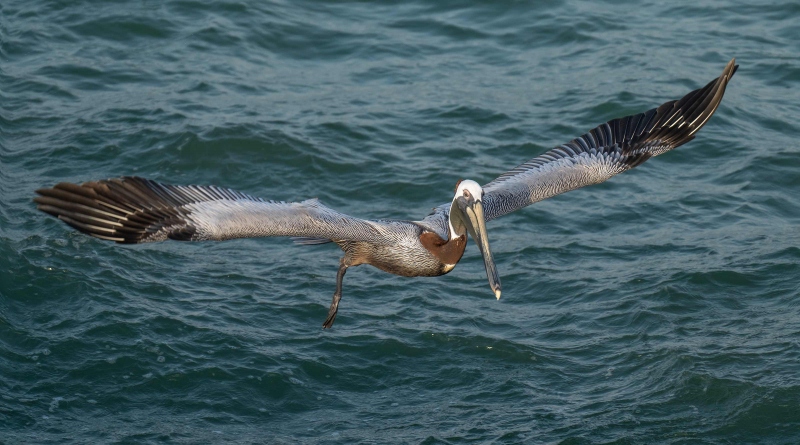
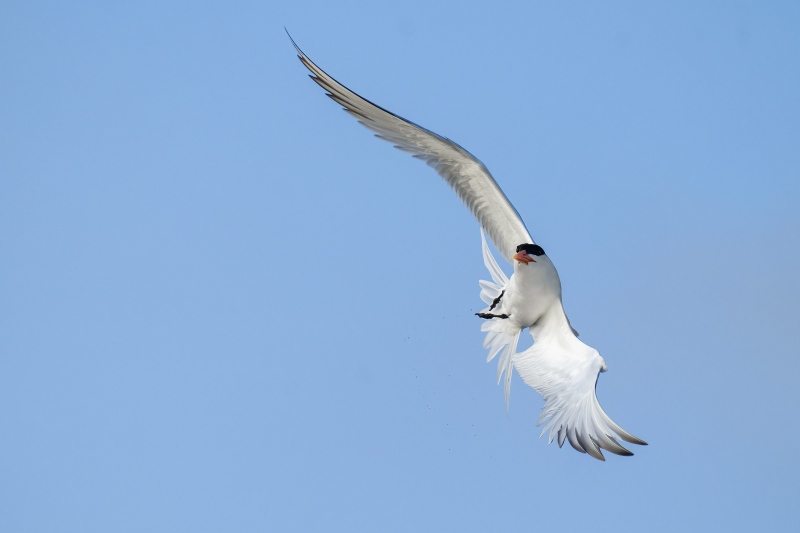
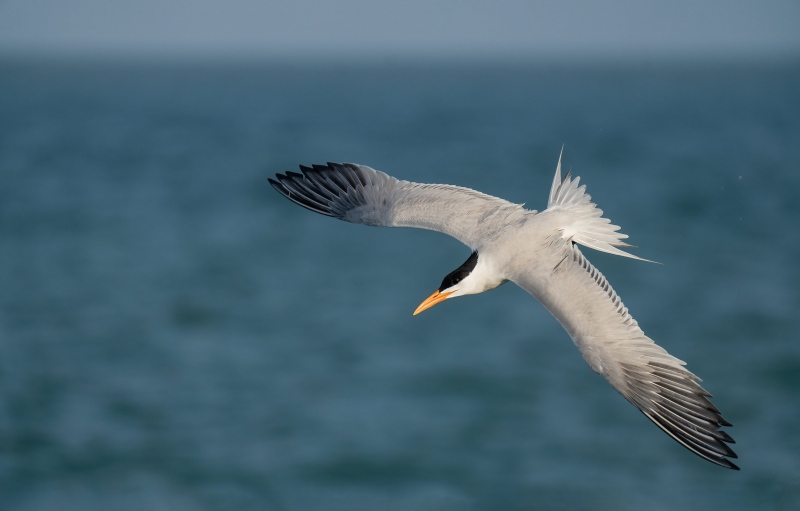
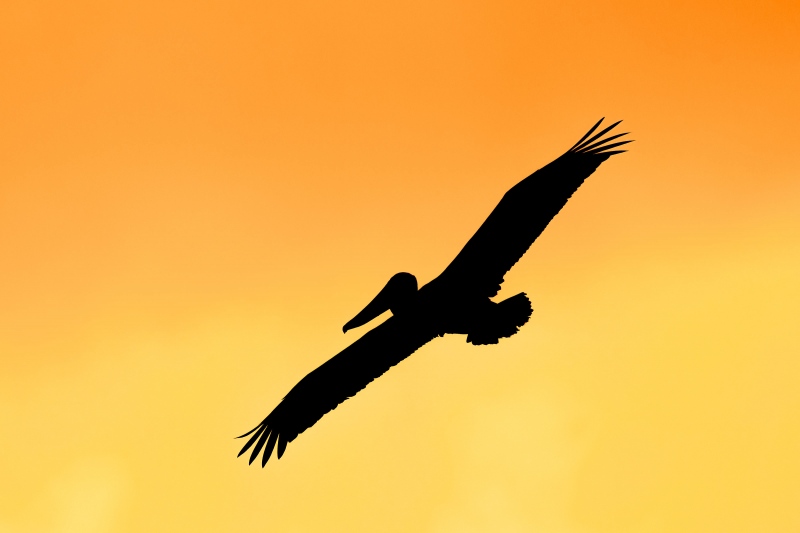
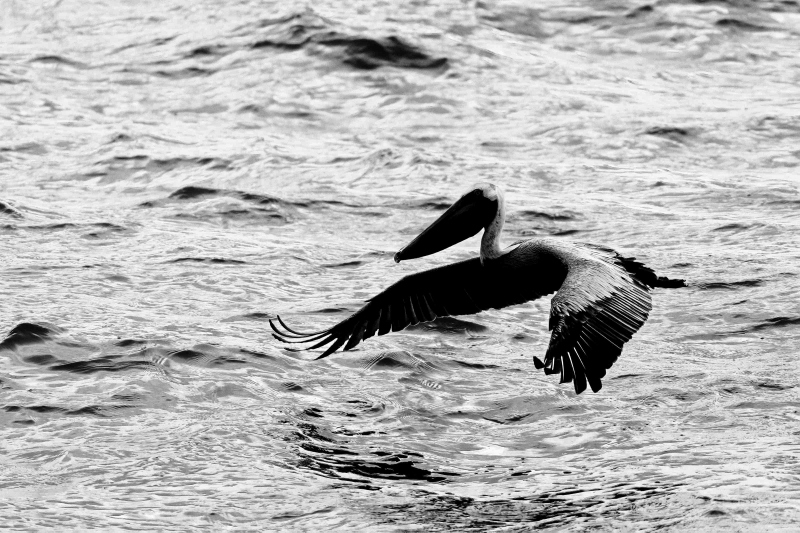
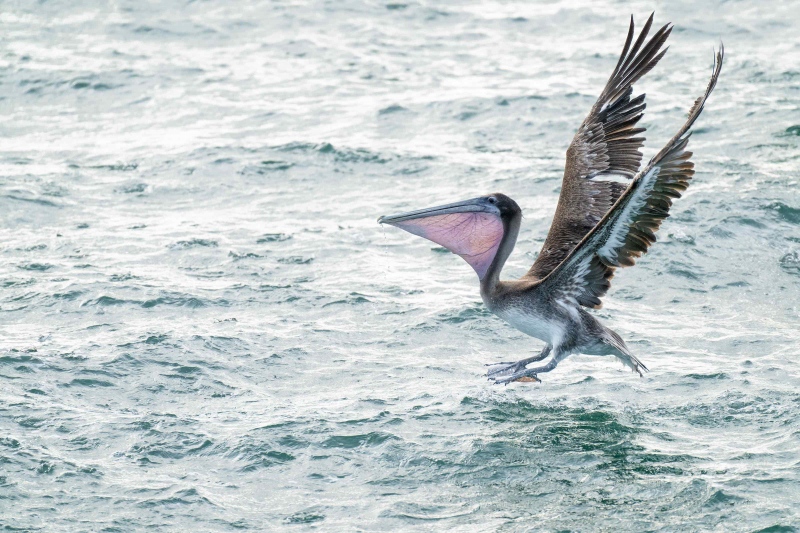
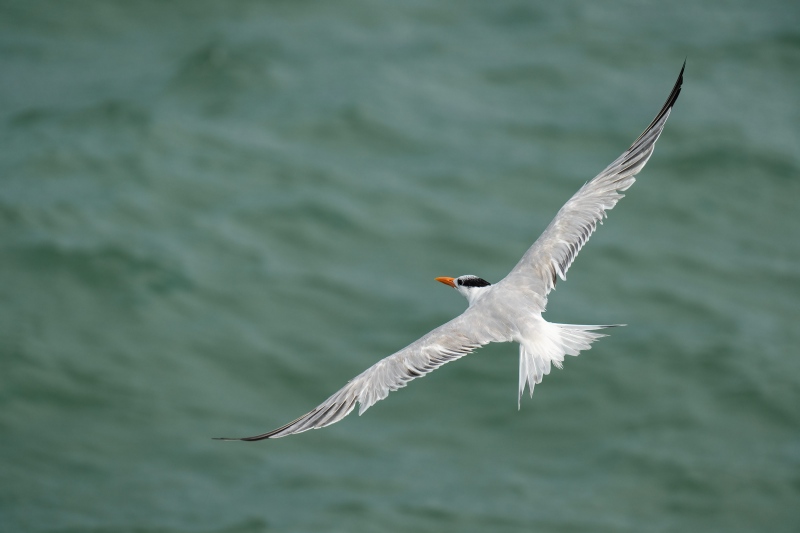
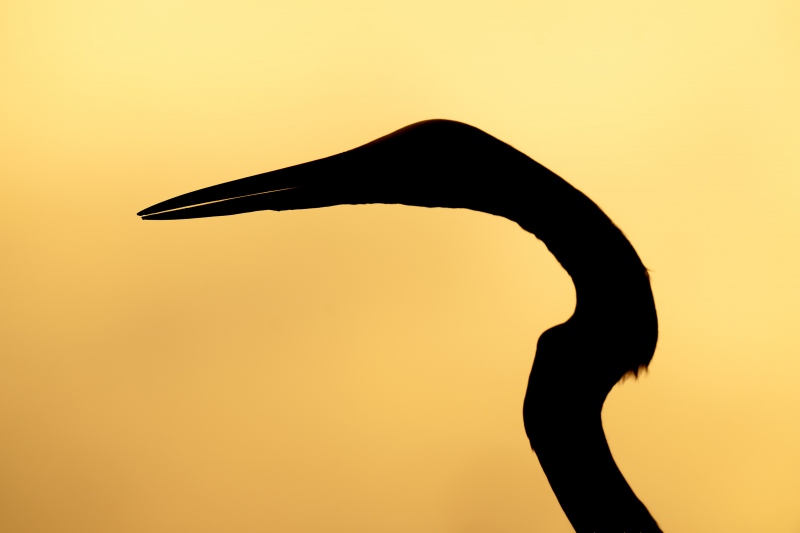
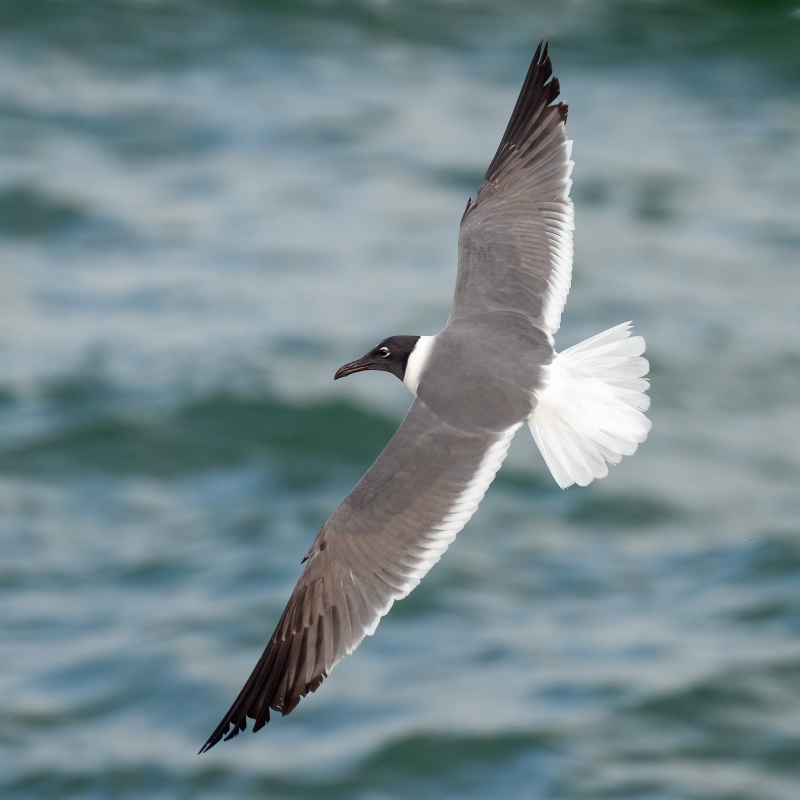
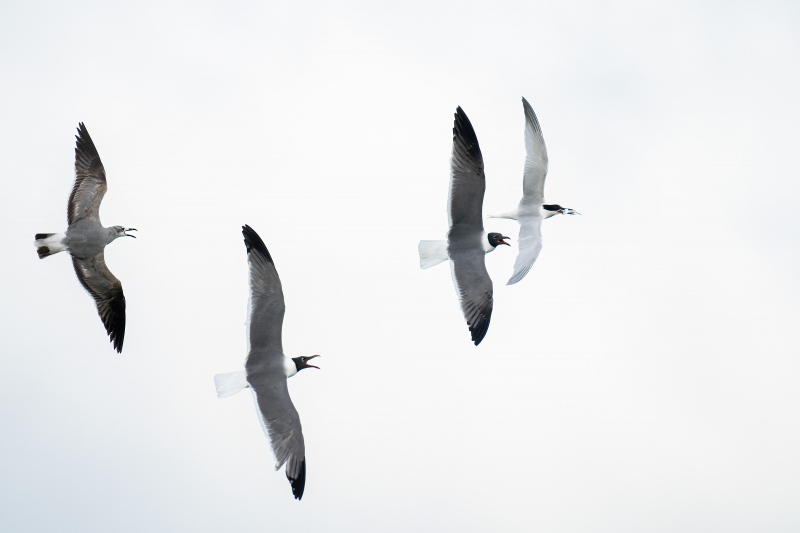
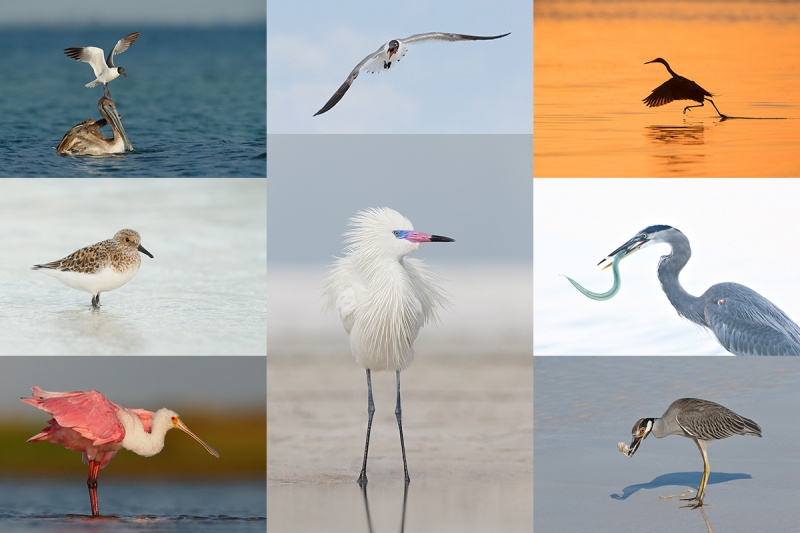
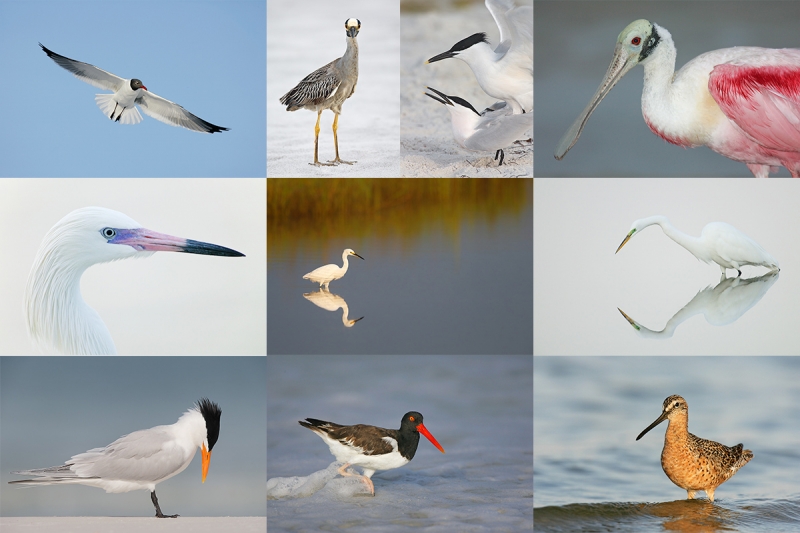
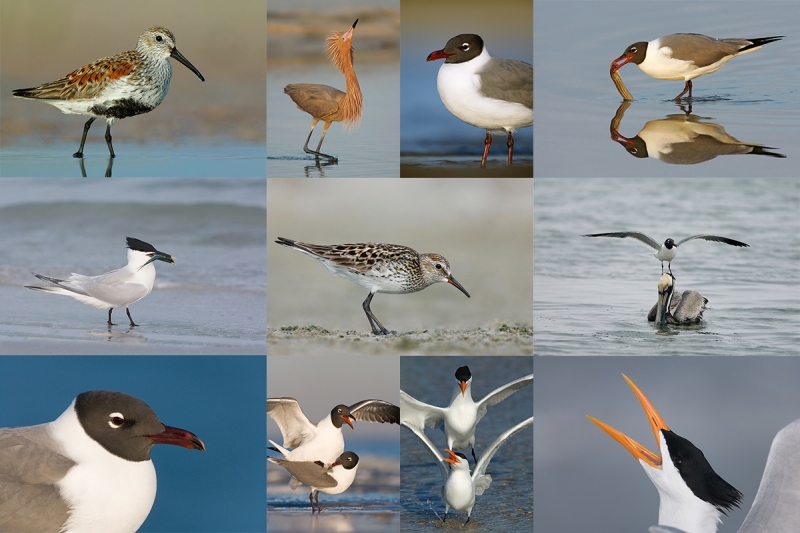
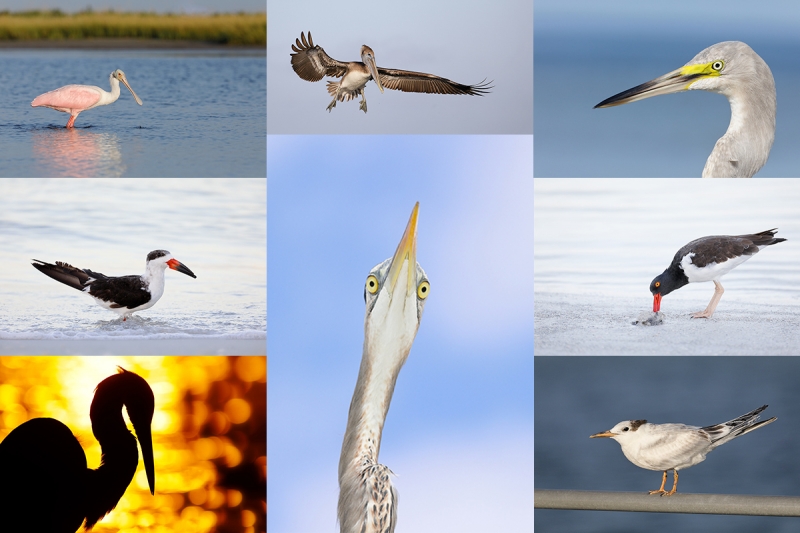













Hi Artie. Congrats on 4000! You are the ultimate mentor 🙂
Favorite image(s): For me, tied between the Image No. 2: Royal Tern wheeling in flight; and the classic Image No. 6: the Brown Pelican backlit emerging after dive with bill pouch distended
Least favorite image: No. 5: the Brown Pelican backlit B&W emerging after dive. Actually, I love B&W, and have noticed more of it lately, (not re birds), but rather that a silhouette would be preferred.
I cannot believe that small tiny lens (that I have) can get so good results with 2x converter. Is a really good lens. Normally I don’t duplicate as I prefer using 100-400GM or the 200-600.
Just a question Arthur, I am mostly a travel photographer, I am saving the money for the first big white from Sony (I use also Canon). I am more oriented for a 400mm because can give me more flexibility (560 f/4, 800 f/5,6). But what about image quality with the converters? The doubt is to get straight the 600 f/4. What is your tought?
Hi Fillipo, You must best fairly new to the blog. Since the 70-200 II came out I have been telling folks that it makes the Sony 100-400 obsolete for many reasons. Please see my e-mail on your next lens. And then give me a call on my cell.
with love, artie
Artie
WOW 4000 blog postings is amazing congrats!
I wouldn’t know where to start in describing what i see other than there all sweet and the teaching behind them all each one’s different and i would have never thought to go B&W on #5 that is really cool! I love #6 with the distended bill pouch and the colors you see thru it is really sweet, just goes to show what backlight can do! The brownie ready to dive in #1 is over the top amazing in the detail. I love #10 with the laughing gulls giving chase. Press the shutter. I’ll have to re-read everything to fully capture what you did a few times and try to put myself there along with you. Thanks a heap for the teaching.
Always with love b
Sue i am not sure you understand the silhouette’s as they are dark when using the sun correct that is what show cases the image! with love b
All 10 images are interesting but image #8 Great Egret white sky silhouette and image #4 Brown Pelican is too dark and image #5 Brown Pelican is just a little dark.